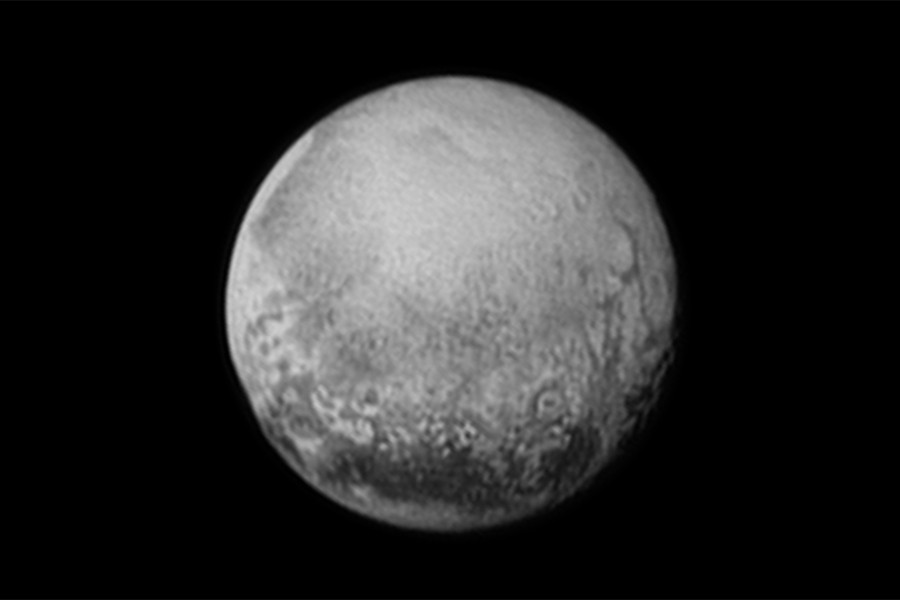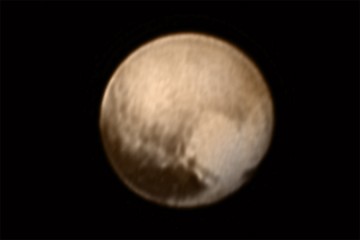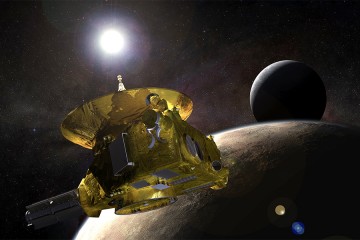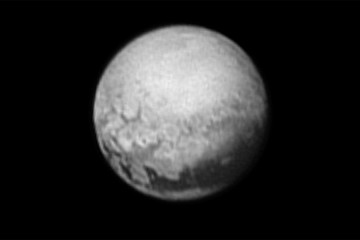It began as a point of light. Then, it evolved into a fuzzy orb. Now, in its latest portrait from NASA's New Horizons spacecraft, Pluto is being revealed as an intriguing new world with distinct surface features, including an immense dark band known as the "whale."
As the unmanned New Horizons spacecraft speeds closer to its historic July 14 Pluto flyby, it's continuing to multi-task, producing images of an icy world that's growing more fascinating and complex every day.
On Saturday, New Horizons captured this image, which suggests some new features that are of keen interest to the Geology, Geophysics and Imaging team now assembled at the Johns Hopkins University Applied Physics Lab. For the first time on Pluto, this view reveals linear features that may be cliffs, as well as a circular feature that could be an impact crater. Just starting to rotate into view on the left side of the image is the bright heart-shaped feature that will be seen in more detail during New Horizons' closest approach.
In an earlier image of Pluto from New Horizons, taken on Thursday from 3.3 million miles away, the dwarf planet begins to reveal the first signs of discrete geologic features. This image views the side of Pluto that always faces its largest moon, Charon, and includes the so-called "tail" of the dark whale-shaped feature along its equator.
"We're close enough now that we're just starting to see Pluto's geology," said New Horizons program scientist Curt Niebur, of NASA Headquarters in Washington, who's keenly interested in the gray area just above the whale's "tail" feature. "It's a unique transition region with a lot of dynamic processes interacting, which makes it of particular scientific interest."
The spacecraft has passed a milestone—only one million miles to Pluto, which occurred at 11:23 p.m. EDT Sunday night—and is approaching Pluto at more than 30,000 miles per hour after a more than nine-year, three-billion mile journey. At 7:49 a.m. EDT on Tuesday, New Horizons will zip past Pluto with a suite of seven science instruments busily gathering data. The mission will complete the initial reconnaissance of the solar system with the first-ever look at the icy dwarf planet.
Posted in Science+Technology
Tagged applied physics laboratory, space exploration, nasa, new horizons












